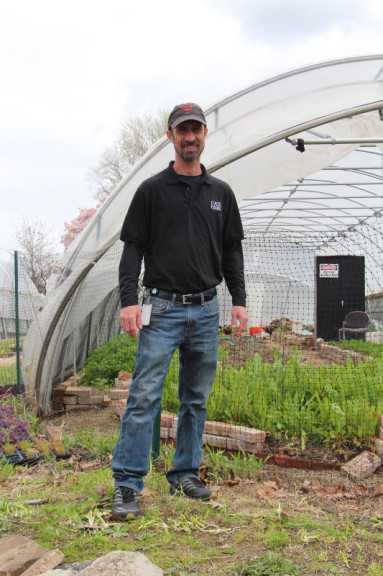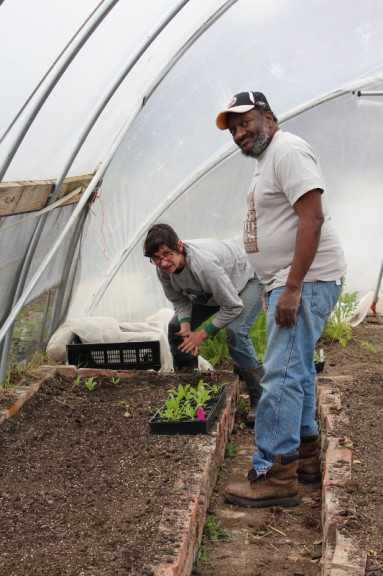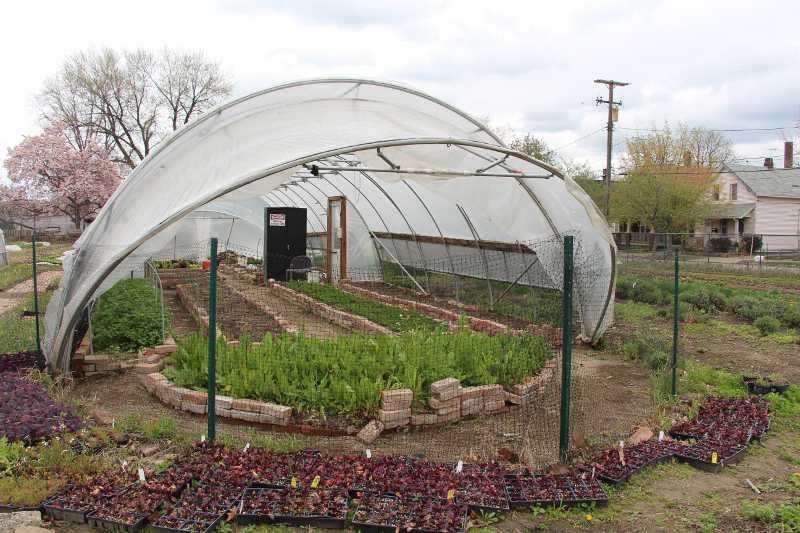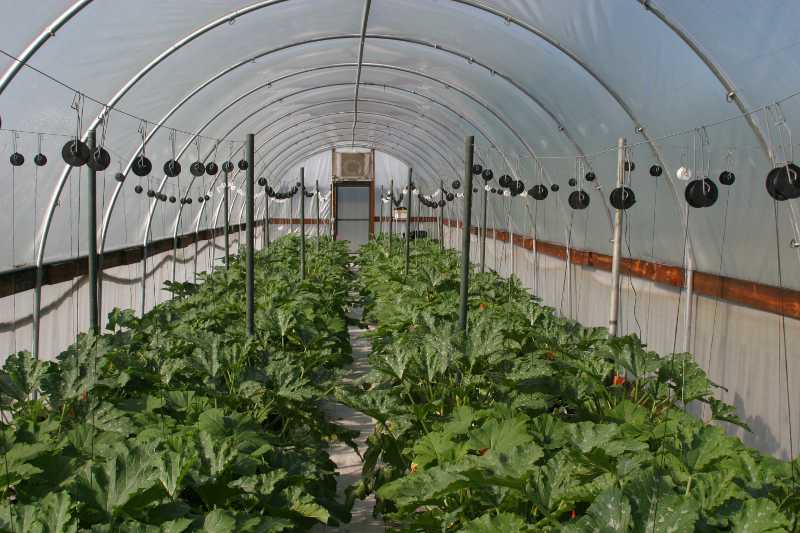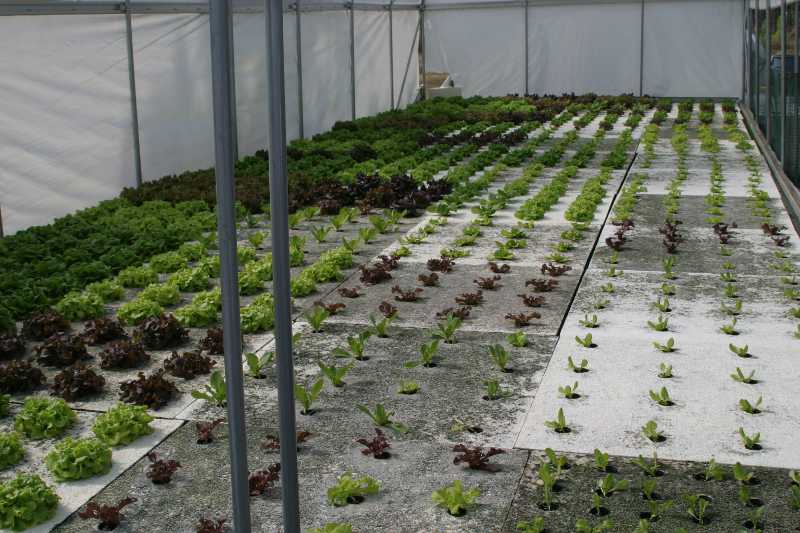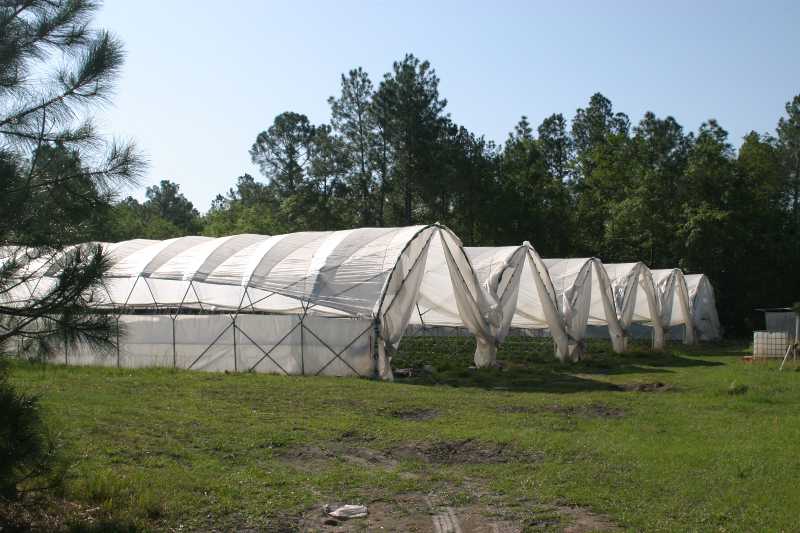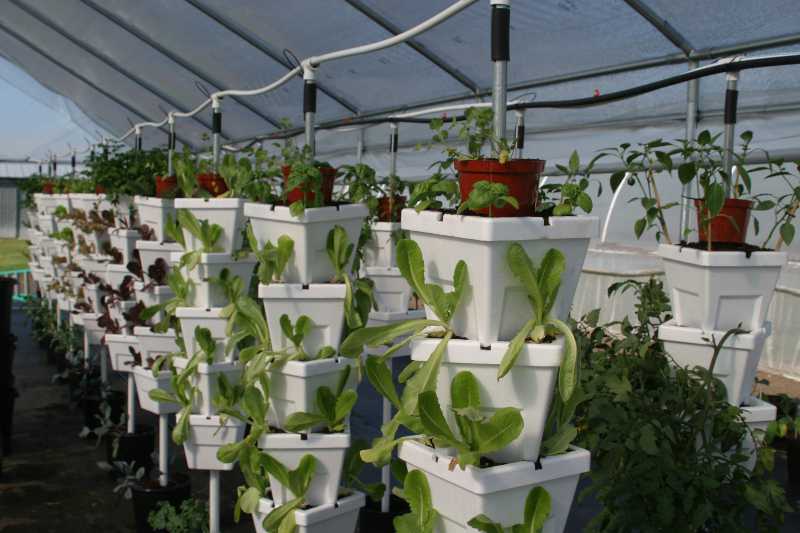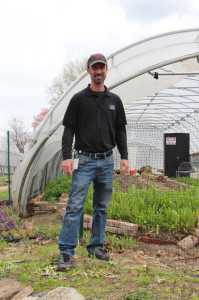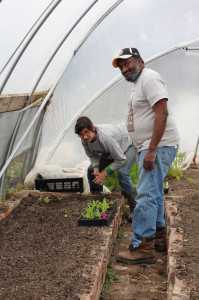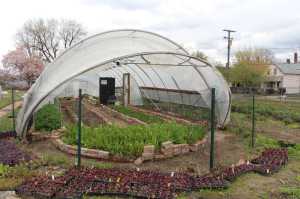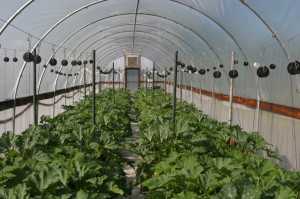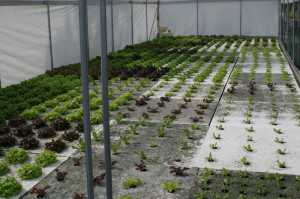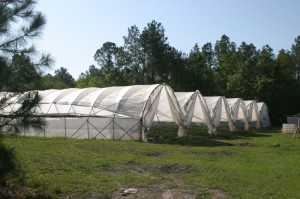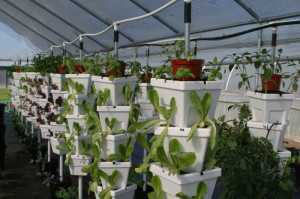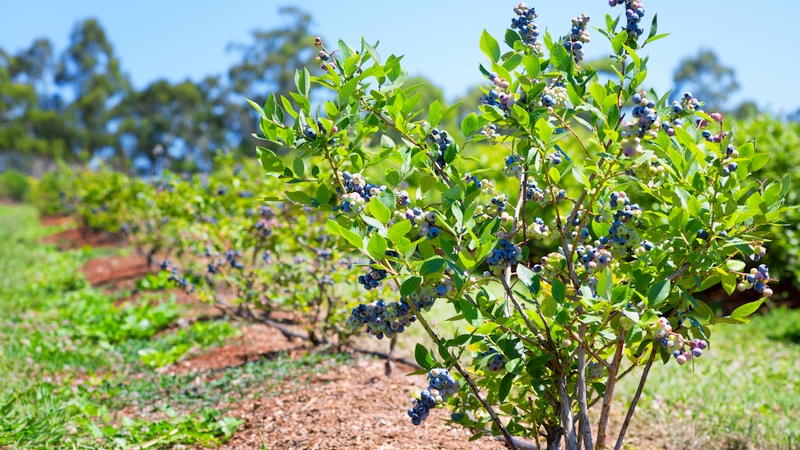High Tunnels Offer A High Return On Investment For Growers

[blackoutgallery id=”59652″]
Being able to have out-of-season produce wherever and whenever we want it has been a luxury for consumers as long as there have been planes, trains, and automobiles. Tomatoes aren’t in season? Ship them in from Mexico. Lettuce? California has plenty.
However, as consumers are increasingly favoring locally grown produce over that which has flown hundreds miles to get to their plates, we’ve reached a contradiction in terms. Regardless of whether they understand it’s impossible to grow tomatoes or squash in open fields in the middle of winter in Ohio, there’s still a demand for that crop, and there’s still interest in it being locally grown.
This is where high tunnels come in. One of the myriad advantages of high tunnel production is the ability to produce crops year-round, satisfying the “locavore’s” demand for fruits and vegetables they might otherwise have to wait seasons for.
Urban High Tunnels In Cleveland, OH
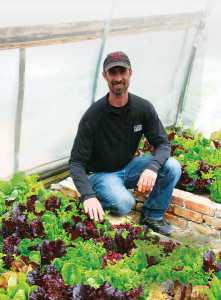
David Snodgrass, Farm Manager at Cleveland Crops in Cleveland, OH
One operation taking advantage of the burgeoning high tunnel trend is Cleveland Crops, an agriculture, food processing, training, and employment program, which includes nine urban farming operations spread across Cleveland and neighboring suburbs. Cleveland Crops’ Farm Manager, David Snodgrass, currently manages the organization’s four high tunnels, and plans to install two more by the end of the year.
His 15 years of experience managing greenhouse facilities at Ohio State University (OSU) has served him well managing high tunnels at Cleveland Crops, as most of the same basic greenhouse growing principles still apply.
Discussing the main benefits high tunnels have brought to Cleveland Crops, Snodgrass first mentions the ability to grow vegetables year-round.
“With the use of high tunnels, we can pretty much grow all year,” he explains. “Through the winter we grow cold-loving crops like kale, spinach, and other leafy greens.”
Having this earliness to market coming out of the cooler months gives high tunnel growers a competitive advantage over other growers who have to wait for warmer weather to bring their produce to market.
“You can have tomatoes and peppers at the market weeks before somebody else does,” he says, “and you can use winter to grow things like spinach and kale, which are super foods, and fairly high value compared to other crops.”
Bringing In Beneficials
Although Cleveland Crops is not certified organic, it abides by organic production practices and has plans to introduce beneficial insects before the year end.
To combat the presence of aphids and whiteflies, which Snodgrass says are relatively common in high tunnels, he plans to introduce parasitic wasps to manage the pests — pointing out yet another advantage of high tunnels, considering these types of beneficials are primarily reserved for protected agricultural environments.
[blackoutgallery id=”59652″]
Tight Environmental Control
Even more so than improved pest management, Snodgrass says the ability to avoid the environmental stressors that normally plague open-field growers is what really drives grower success in high tunnels. The primary environmental problem? Leaf wetness.
“The leaf wetness period is what drives foliar pathogen development. Because the plants are under that cover — while you still have elevated humidity levels — you don’t have water sitting on the leaves,” Snodgrass says.
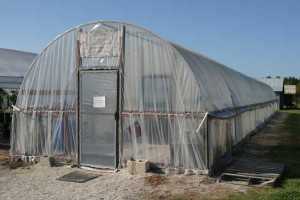
Photo credit: Dan Cantliffe
Another environmental factor growers can control is temperature, which can be manipulated through adjusting both ventilation and shading.
“Almost all of our high tunnels use passive ventilation. We have roll up sides, and a couple of our designs have roll up ends, so you get side-to-side air movement, and a little through the ends,” he explains.
Snodgrass’ tunnels are typically 15 to 20 degrees warmer than the outside temperature in the summer and 5 to 10 degrees higher in the winter. He cautions, however, that all temperature variations depend on the sunlight on a given day.
“On a really sunny winter day, it’s almost time to start thinking about cracking [the sides] and letting some cool air in,” he says.
During the hotter months of the summer, Snodgrass places a shade cloth over the tunnel to cut down on the amount of radiation the plants receive, also known as their “daily light interval,” helping the plants create more photosynthates and spur fruit development.
Through research he and his colleagues conducted at OSU, Snodgrass discovered the crops that respond best to this type of treatment are peppers and tomatoes, despite the fact that they are “high light” crops.
“Everybody thinks peppers and tomatoes have to be in the baking sun all day, but if you could reduce that load during the most intense part of the summer, that actually helps the plants produce more fruit and keeps them from getting sunburned,” he explains.
Florida High Tunnels
Heading down south to Florida, you might not think that the season extension benefits of high tunnel production are as pronounced as in the colder climates up north. According to Dan Cantliffe, county Extension educator at the University of Florida, Institute of Food and Agricultural Sciences, that’s not quite the case.

Dan Cantliffe, county Extension educator at the University of Florida, Institute of Food and Agricultural Sciences.
Cantliffe has witnessed firsthand how earliness to market achieved from year-round tunnel production has greatly benefitted growers in the state. Many major retailers are looking for a 12-month commitment from their clients.
“The industry will say, ‘Well, if you want to be a customer, you don’t come in for two weeks a year and expect us to buy stuff from you.’ As far as they’re concerned they prefer a longer production season,” he explains.
“That’s where tunnels come in; it’s that earliness to market,” Cantliffe says. “The price that you [command from] the early crop is 10 times more than you would get if you waited another three weeks or a month in open field.”
To ensure your crops are early to market, keep them watered and fertilized.Cantliffe says drip lines are the most efficient way to get the job done.
“Fertilizer can be metered out through drip irrigation, so growers see a tremendous cropping advantage both in yield and quality with a net reduction in fertilizer and water,” he says.
However, drip isn’t the only way to save water in high tunnels. Cantliffe has worked with many growers who are collecting rainwater and recycling it through the high tunnels to help cut costs and mitigate problems associated with saltwater intrusion — a common concern in Florida.
Choose The Right Tunnel
Cantliffe offers growers some advice when choosing a high tunnel, explaining that they should be sure to select the appropriate design for their regional climate needs instead of approaching the purchase from a one-size-fits all, or a “cheaper-is-better” approach. For example, compared to warmer climates, growers in cooler climates may want lower sides because the tunnels require less ventilation.

Photo credit: Dan Cantliffe
Cantliffe points out some other questions growers should be asking: Do I need it vented? Do I want any automated controls? Do I want front panels or front doors? All of these adjustments boil down to the need for growers to properly manage tunnel temperature, he explains.
Increased Quality, Crop Performance
As for what crops are ideal for production in high tunnels, Cantliffe says there is a wide range of options for growers to choose from. In Florida, strawberries, cucumbers, squash, melons, eggplant, and sweet onions, are just a few of the crops produced in high tunnels.
“You can essentially grow anything. We have one grower who produces 5 acres of cauliflower and broccoli, and he sees the advantage of growing in tunnels,” he states.
For the highest return on investment, Cantliffe recommends growers invest in high-value, high-quality crops. For example, if you have a higher-end tomato, he suggests growing it in the high tunnel instead of the field to make sure you get the best color and flavor you can, and to get a higher price in the market.
Furthermore, tunnels also allow growers to increase their plant population, thereby increasing yield.
“It’s a confined area, and you’re not trying to farm a ton of acres like you would in open field production,” Cantliffe says. “Increased yield and quality are the two major things you see in high tunnels.”
Return On Investment
Sticker shock may be the first emotion growers experience when thinking about introducing high tunnels to their operation, but Cantliffe encourages growers to compare adding high tunnels to purchasing a tractor, in terms of the return on investment.
“Instead of thinking ‘Oh, we’ll never get the tunnel paid for,’ it’s paid off in 18 months because they’re out of [production] for three to four months in open field — but with the high tunnels they’re [producing],” he rationalizes.
Available Funding
For those interested in using high tunnels on their farm, USDA’s National Resources Conservation Center (NRCS) provides grants and technical assistance to eligible growers through the Environmental Quality Incentives Program’s Seasonal High Tunnel Initiative. Both Cleveland Crops Farm manager, David Snodgrass, and Dan Cantliffe, Extension educator at the University of Florida, have used EQIP to fund their projects. During the first year of the program NRCS received close to 3,000 applications for high tunnels, and allocated $13 million in funds for 2,422 seasonal high tunnels in 43 states.
For more information and to apply, visit http://1.usa.gov/1uHBe6Y.




